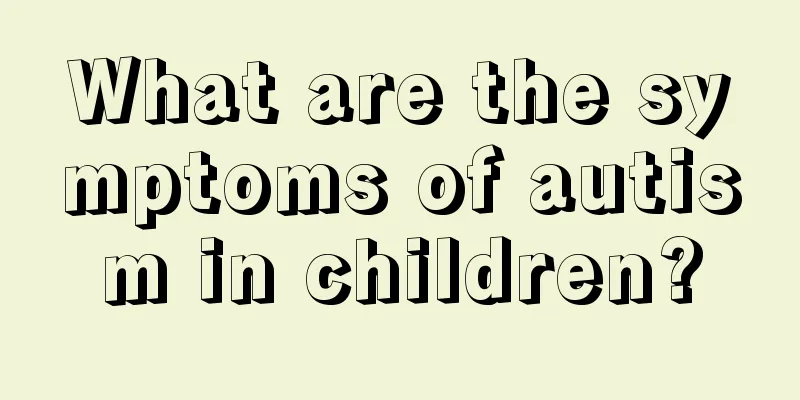What is the reason for the blue buttocks of the newborn baby?

|
Every mother hopes to give birth to a fair, chubby and healthy baby, but many babies are born with blue birthmarks. The locations of the birthmarks are different. Some may grow on the face, neck, back, buttocks, legs and other parts of the body. This has caused a lot of trouble for many mothers, and they have suggested this to doctors. Mothers don't need to worry, because the blue color will fade away as the baby grows in a short time. The arrival of a newborn is a happy event for every family, but many people will find that newborn babies will have many bruises on their buttocks or waist. Why is this happening?First of all, many babies who have just been born will have some blue marks on their buttocks, waist and back. Most of the older generation say that these blue marks are a reflection of the child's overly stubborn temper. When they were reincarnated and passed through the Naihe Bridge, they refused to drink the Meng Po soup in front of the Naihe Bridge, so these blue marks were caused by Meng Po. Some people also believe that this is because the child occupies a limited space in the mother's body, so if the mother has large movements, it will squeeze the child, and these blue marks are the marks caused by squeezing. In fact, the blue marks on the body of a newborn are medically called Mongolian spots, which are also called congenital dermal melanocytosis. Mongolian spots usually appear on the body of newborns, and are most common on the waist and buttocks. It is produced because melanin cannot be discharged and therefore accumulates on the surface of the skin, resulting in faint blue marks. The Mongolian spots appear on the ears because melanin does not accumulate when the child is in the mother's womb, but after the child is born, the umbilical cord connecting the child to the mother is cut off, so melanin will accumulate and Mongolian spots will appear. Finally, Mongolian spots will generally disappear gradually within two years after the birth of a newborn, and these Mongolian spots will not cause any harm to the newborn's body. Therefore, no special treatment is required. Almost every newborn has Mongolian spots, but some black people do not have them because their skin color is darker. As long as mothers carefully observe that the Mongolian spots on the fetus' body become smaller each time, no accidents will occur.In short, most newborn babies have Mongolian spots. If mothers are worried, they can show the scars to the doctor during the physical examination. Finally, I wish every newborn can thrive. |
<<: Newborn baby with yellow stool
Recommend
Treatment for bruises on baby's body
I don’t know if you have ever encountered bruises...
How to treat ocular hypertension in children?
Nowadays, because there are so many electronic pr...
How to treat hematuria in children? The following five points can help you solve your doubts
Children have frequent hematuria. Normal healthy ...
How to treat strabismus in children effectively
Strabismus is a common vision disease in life, es...
What is the disease of children's abdominal twitching?
If your child's stomach twitches involuntaril...
What should I do if my baby doesn't like to eat recently?
Parents all wish that their babies would eat more...
What should I do if my baby coughs and sneezes?
Babies will often get sick as they grow because t...
What to do if your 11-year-old child wets the bed
For an 11-year-old child, if the bedwetting pheno...
Adverse reactions to meningococcal vaccines
Meningococcal meningitis is the abbreviation of e...
What should I do if my child often has a fever?
Fever is a normal physiological phenomenon, but i...
Baby's saliva is foamy
The presence of foam in the baby's saliva is ...
What are three ways to change a child’s carelessness?
When tutoring children with homework, parents oft...
Symptoms of cranial nerve damage in children
There are numerous cranial nerves distributed in ...
What are the medicines for clearing heat and detoxifying in children?
As people's nightlife becomes more and more a...
How to solve the problem of chapped lips and bleeding in children
Children are still young, and as parents, we must...









